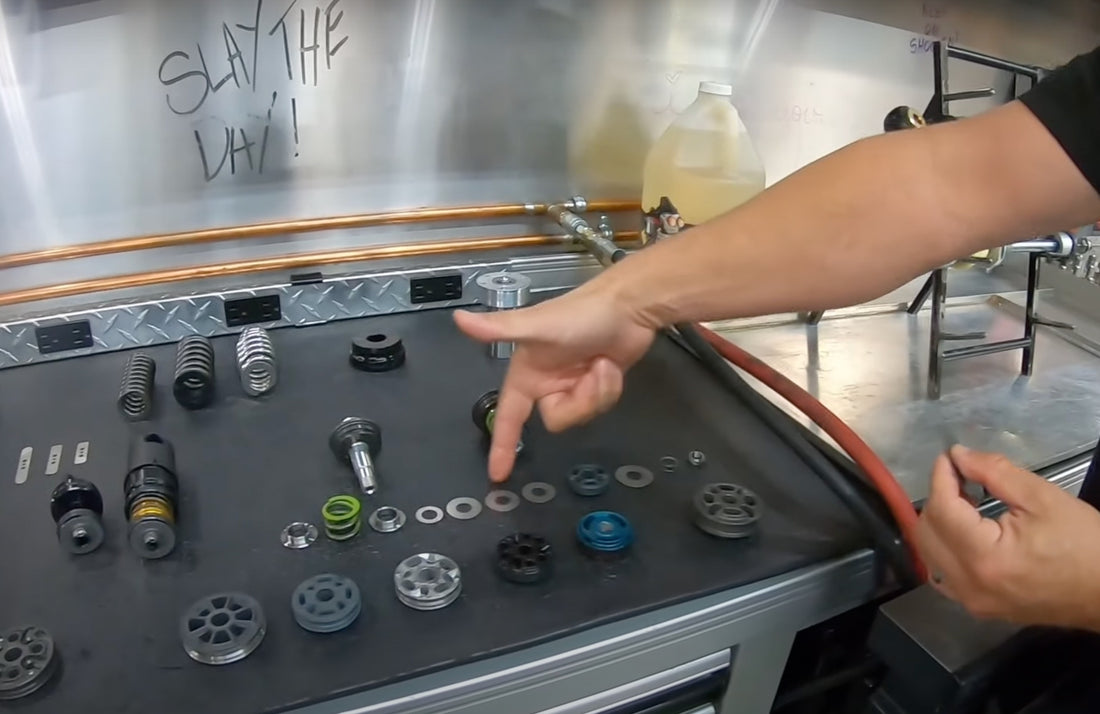When you start talking about the nitty gritty of shocks and vehicle suspension, the various terms can quickly become confusing. If the video below of Justin Smith explaining the fundamentals of rebuilding vs. revalving doesn’t answer your question, hopefully we can help clarify the difference between rebuilding your shock and revalving your shock.
At its simplest, it is akin to the difference between conducting routine service/maintenance on your shock and upgrading the shock to be something new entirely.

A Shock Rebuild or Shock Service includes replacing internal shock seals, adding fresh shock oil and new nitrogen.
What is a shock Rebuild?
- Similar to having your engine serviced, the purpose of a shock rebuild is to routinely inspect its condition, replace any wearable parts (i.e., seals), and change the oil to ensure it continues performing at factory specifications. The process involves having the shocks completely torn down and cleaned, inspected for damage and/or wear, the installation of new seals, oil, and nitrogen recharge, as well as the replacement of any broken parts upon customer approval. Rebuilding, in contrast to revalving, is also much cheaper. With deep industry knowledge, Shock therapy has the expertise to rebuild and repair most FOX and Walker Evans shocks for Polaris, Can-Am, Honda, Kawasaki, Yamaha, and Arctic Cat side-by-sides. More details: Shock Rebuild and Repair.

Shock Valving is a loose term that involves internal shock modifications including different compression and rebound shims, new bypass tubes, new bypass port side stack shims and more.
What is shock Revalving?
- Revalving is much more comprehensive than rebuilding, and likewise more costly. Not just intended for racing application –– but also for recreational riders looking to get the most out of their suspension –– revalving involves upgrading the suspension by making major modification to the internals of the shock. Shock Therapy’s internal valving (aka Ride-Improvement System) custom tailors the shock upgrade to the driving style of the unit and the various terrains you ride. In all, the modifications we perform inside the shock help promote plushness through small chop and chatter, increase bottom-out resistance at full compression, and remove stiff ride quality at moderate to low speeds. More details: Shock Valving (Ride-Improvement System).
How does Revalving relate to Rebuilding?
- Considering both rebuilding and revalving require the shock to be disassembled, having them done at the same time can save you a little money as opposed to having them done separate times. Moreover, while rebuilding should be conducted on a routine basis (we recommend about every 2,500-3,000 miles), revalving is a one-time upgrade. Nevertheless –– with the exclusion of more costly valving such as bypass tubes –– if we have improved the internal designs of the Ride Improvement System since you had your revalving done, Shock Therapy can update the valving on the piston to the latest design during your next routine rebuild at no additional cost.
More details regarding a Shock Revalve (Ride-Improvement System)

